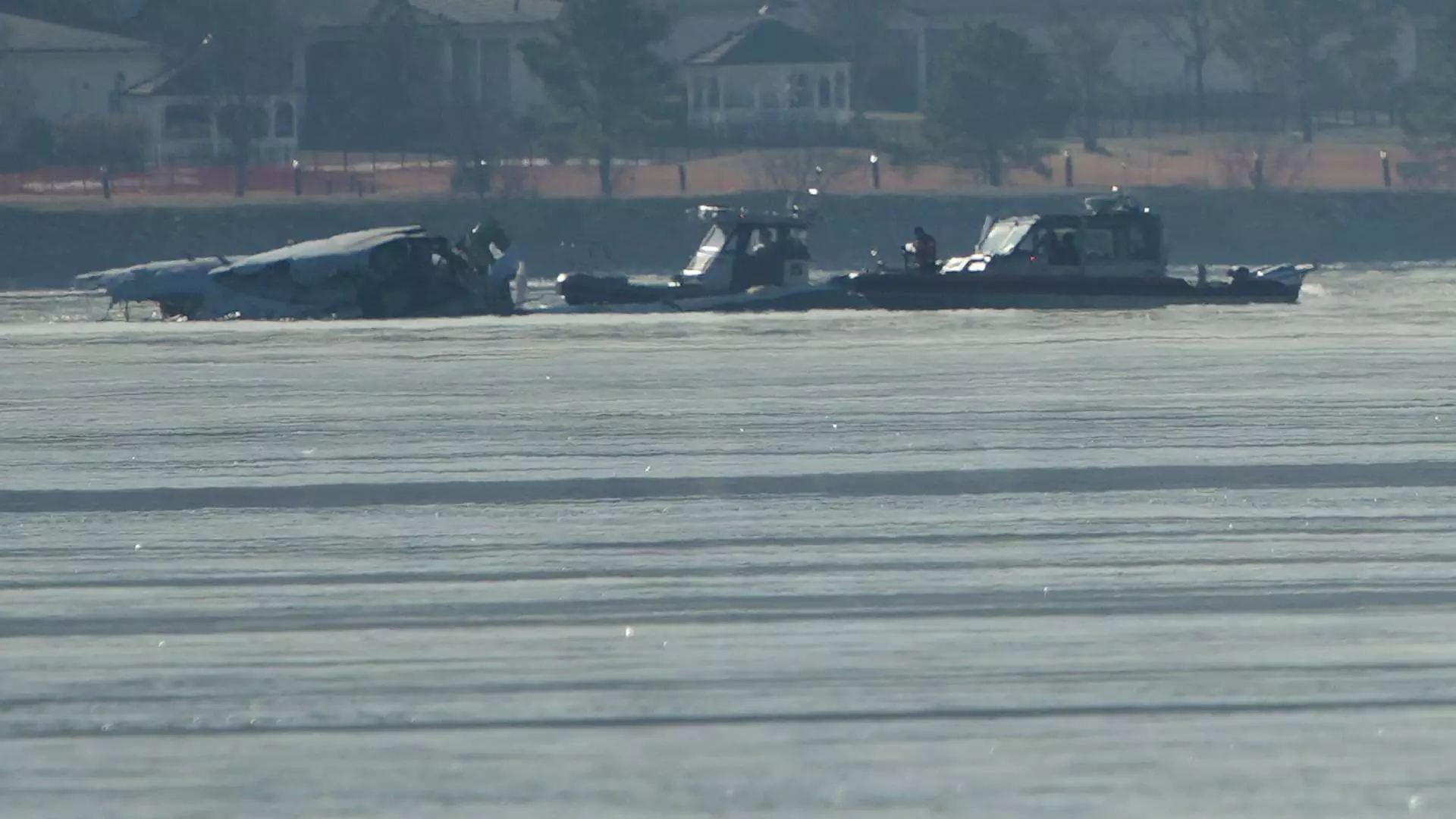The recent collision of an American Airlines regional jet and an Army Black Hawk helicopter near Washington, D.C.’s Reagan National Airport marks a somber moment in U.S. aviation history. On Wednesday night, just before 9 p.m. ET, this heart-wrenching incident resulted in the loss of all aboard both aircraft, highlighting the complex and dangerous dynamics of American airspace. The regional jet was carrying 60 passengers and four crew members, while the helicopter had three individuals onboard, adding up to a tragic total without survivors. As authorities work tirelessly to retrieve the bodies from the icy waters of the Potomac River, the repercussions of this crash extend far beyond the immediate loss.
This incident underscores a growing concern regarding congested airspace across the United States—a dilemma that has been simmering for years. The Federal Aviation Administration (FAA) and the airline industry have faced increasing pressure from the public and lawmakers to address the urgent need for air traffic control modernization. With a history devoid of a major fatal commercial aviation incident since 2009, the recent accident acts as a harsh reminder of vulnerabilities that persist even in a seemingly robust aviation system.
There have been alarming close calls reported at various airports, including an incident earlier this year at Reagan National Airport where a JetBlue Airways flight nearly collided with a Southwest Airlines plane during takeoff. Such occurrences have raised red flags among industry leaders and regulators regarding the safety measures currently in place. Although the immediate cause of Wednesday’s tragedy remains under investigation and could take months to conclude, it has sparked urgent discourse on the need for reform.
Industry Responses and Calls for Change
In the wake of this calamity, airline executives and industry figures have voiced their frustration with the current state of air traffic management. Bob Jordan, the CEO of Southwest Airlines, emphasized the essential need for modernization, claiming that the system has suffered from neglect for “literally decades.” These comments reflect broader concerns about how outdated infrastructure and insufficient staffing are contributing to an environment that may be prone to danger.
Investment in air traffic technology and an increase in workforce size are pivotal steps advocated by industry stakeholders as part of the solution to alleviate congestion, particularly in high-traffic corridors such as that surrounding Reagan National Airport. As environmental conditions, such as winter weather threats that contributed to the visibility issues on the day of the crash, complicate air traffic, the urgency for resource enhancements is more pronounced than ever.
Moving forward, this tragic event necessitates a comprehensive evaluation of existing safety protocols, air traffic control systems, and management strategies that govern U.S. airspace. While the assurance of safety articulated by industry leaders is heartening, it is crucial that these sentiments are translated into proactive measures. Recent history indicates that the urgency for systemic improvements must translate into actionable reforms. As investigations unfold and the memories of those lost serve as a powerful catalyst, now is the time for a concerted effort to prioritize the modernization of air traffic control in the United States, ensuring that the skies are safer for generations to come.

